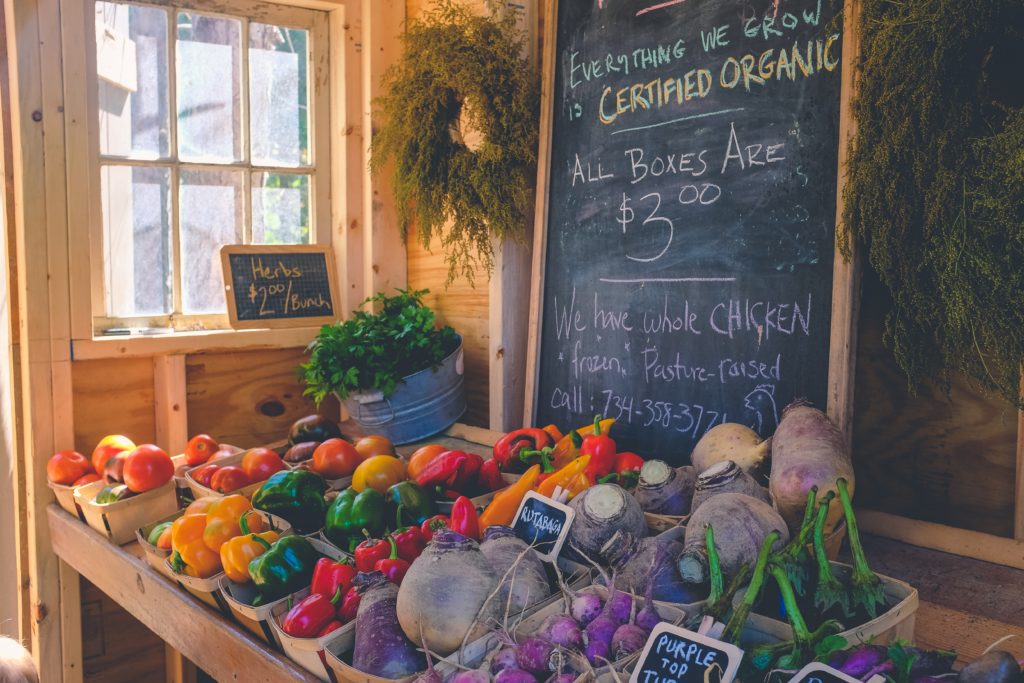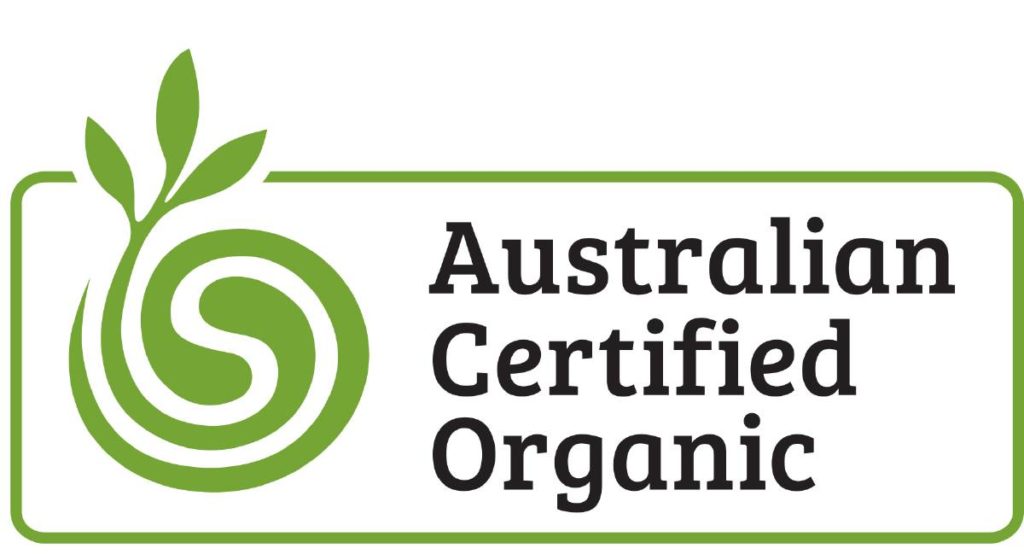Nutrient claims are bound by standards set out by the Australian Government. This means that consumers are somewhat protected when it comes to any false, deceptive or misleading products. We are lucky in Australia to have strict legislation around food labelling, as this is not always mirrored across the globe.
What does ‘Organic’ mean?
Anything labelled ‘organic’ or ‘certified organic’ encompasses most attributes that you would expect in a product produced ethically. These include:
- Cruelty free
- Socially responsible
- Free range
- Pasture fed
- Free of genetic modification
- Free of synthetic pesticides, hormones, herbicides and antibiotics
Organics is a whole systems approach with a focus on friendlier processes and innovative methods. Hence, a product can be labelled ‘organic’, if the product or the ingredients within come from a farm/s which don’t rely on synthetic chemicals or other interventionist approaches. Rather, ‘organic’ farming focuses on natural and environmentally friendly processes which work to withhold the nutrient content and health of the produce and conserve the natural ecosystems of both the flora and fauna they may be surrounded by.

What does ‘Certified Organic’ mean?
In Australia there is little or no control over the term ‘organic’, hence any company or food organisation can use the term loosely in their product name or on their packaging without needing justification. However, any business that uses the term ‘organic’ in their product name or on their packaging, must be able to substantiate those claims otherwise they risk being unlawful. For example, foods may not always be 100% chemical free as they may be grown on land that may contain chemical residues from previous exposure (NOTE: the chemical residues within ‘organic’ labelled produce is considered to be lower than those found in foods without the attached label).
Therefore many ‘organic’ businesses choose to be certified to underpin truth in their labelling and marketing and promote consumer confidence. Hence, the term ‘certified organic’ encompasses a farm, product or service that has been independently audited and verified by a third party certification agency as being ‘organic’ in process. There are six private certifiers in Australia who analyse and test every part of the process of supply, from seeding, to production of an ingredient or the full product and/or the service provided to ensure adherence to a standard
There are two key standards that govern the production, processing and labelling of organic food in Australia:
- The National Standard for Organic and Biodynamic Produce (for exported foods)
- The Australian Standard for Organic and Biodynamic Products (for domestic and imported foods).
It is mandatory for all exported produce to be certified by The National Standard for Organic and Biodynamic Produce. However, domestically marketed organic products aligned to The Australian Standard for Organic and Biodynamic Products are not mandated and certification is voluntary. Because it is voluntary, many farmers choose to take the next step in certification to prove their process.
Important to note, organic standards used in Australia are generally owned and managed by private organisations such as Australian Organic, many of which are approved and accredited certification companies too.
What is the difference?
The AS 6000 standard – i.e. the Australian Standard for Organic and Biodynamic Products – is a guideline that was developed with the intent to standardise practices within the ever-growing organic industry in Australia. It regulates how growers and manufacturers can grow, produce, distribute, market and label products as ‘organic’ or ‘biodynamic’. This is a voluntary standard for Australian growers and manufacturers and provides a useful reference point for determining whether a product is in fact ‘organic’ or grown via biodynamic practices.
Organic products generally attract a premium price, when compared to the standard fare found at the supermarket. Hence, to ensure you are purchasing a genuine organic product, seek out ‘certified organic’ products highlighted with a logo like below. By choosing a ‘certified organic’ product, you can trust that it is entirely ‘organic’ and that the food has met and in some cases, exceeded minimum government requirements.

What does ‘Biodynamic’ mean?
Foods labelled ‘biodynamic’ are similar to ‘organic’ labelled foods in that there is an agricultural systems that produce organic food, but with more of a focus on holistic and philosophical farming processes, rather than just ensuring organic food labelling standards are being met. Biodynamic farming traditionally favours processes that add vitality and optimise the flora and fauna and the soil and it also places great focus on ensuring everything is generated on the farm – from medicinal plants for pest control, to using animal droppings as manure and more. Biodynamic farmers have also been known to work in harmony with the cycles of the moon and the solar system to make the most of the Earth’s natural energy for seeding/planting, harvesting and/or pruning on specified days of this cycle. Hence, the word refers to more farming process and the creation of a closed ecosystem rather than the composition of the food.
What does ‘Natural’ mean?
The word ‘natural’ encompasses the ideal of the product being processed in a way that maintains the integrity and the natural state of the food. Generally, foods labelled ‘natural’ are considered to be anything that is a plant, animal or mineral byproduct. However, like the word ‘organic’ this label isn’t regulated by a governing body, therefore, brands can use the word on their packaging purely as a marketing ploy, despite many ‘natural’ labelled products having synthetic ingredients as part of their composition.
Have something to say?
Comment below and feel free to share on all your platforms. As always, I would love to know your biggest takeaway from this article – Tag us on Instagram @optima_health or #optimahealth. Thanks for reading x
Sources:
http://www.foodauthority.nsw.gov.au/_Documents/foodsafetyandyou/organic_foods.pdf
https://www.accc.gov.au/consumers/groceries/organic-claims
https://austorganic.com/wp-content/uploads/2013/09/Consumer_Standards_Final_21.pdf
https://www.betterhealth.vic.gov.au/health/healthyliving/organic-food
